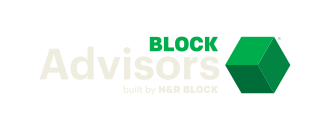Companies use human resources (HR) software to manage employees, processes, and information effectively. These programs reduce errors and ensure compliance. HR platforms can be all-in-one tools called human resources management systems (HRMS), human resources information systems (HRIS), or human capital management (HCM).
Conversely, small businesses may select individual applications on an as-needed basis. Several HR software providers let you add modules or upgrade plans to expand functionality beyond payroll or basic new hiring reporting tools. Explore the features and benefits of four common HR systems, then discover alternatives to a complex technology stack.
Applicant tracking systems (ATS)
A small business applicant tracking system (ATS) streamlines the hiring process, from sourcing candidates to scheduling interviews. Recruiters and entrepreneurs use an ATS to filter resumes, allowing them to hire employees quickly. Applicant tracking systems can be standalone platforms or part of an HRMS program.
For instance, SmartRecruiters focuses on talent acquisition, offering applicant tracking, chatbot, artificial intelligence (AI), and text recruiting tools. On the other hand, Gusto Plus users can access an ATS application that integrates seamlessly with Gusto’s HR and payroll software. For small businesses that use project management tool Monday.com, you can leverage the applicant tracker template to gather applicant information via embedded forms.
According to Workable, ATS pricing varies widely, from free to hundreds of dollars per active position or month. The pay-per-employee model costs $4 to $7 monthly, whereas the pay-per-recruiter fee is typically “$100 to $500 per active position.”
[Read more: 8 Top Recruiting Tools for Hiring Managers]
Performance management software
A performance management system allows small businesses to set goals and track employee performance consistently and fairly. It reduces bias while increasing trust in your organization and HR department. Most performance management tools support 360-degree reviews, realistic goal setting, and analytics.
Betterworks 2023 Global HR Research report found that employees receiving “meaningful performance enablement” reported “far higher levels of optimism, confidence, engagement, and productivity.” Since only 32% of respondents told Betterworks that they trust their leaders and only 26% said they trust human resources, adding a performance management system can increase confidence in your company, resulting in better employee retention rates.
Per-employee pricing ranges from $2 to $27 monthly. Most systems let you establish company, team, and individual objectives. Like other HR software, you can choose from standalone systems such as AssessTeam or add a performance management module to your BambooHR plan.
Fully managed payroll services file payroll taxes and forms on your company’s behalf, ensuring compliance with federal, state, and local laws.
Payroll and human resources platforms
Payroll software is often one of the first HR systems a small business acquires. It calculates wages and employment taxes, provides employee portals, and direct deposits or cuts checks for staff. Fully managed payroll services file payroll taxes and forms on your company’s behalf, ensuring compliance with federal, state, and local laws.
Many payroll systems include HR features such as new hire reporting, onboarding checklists, and time-off analytics. The Paychex company SurePayroll specializes in small businesses with fewer than 10 employees and doesn’t have many HR tools beyond payroll. Paychex is an all-in-one HR software solution offering payroll, benefits, and HR services. Likewise, Gusto provides payroll, HR, and ATS tools; features vary depending on the subscription.
Payroll and HR software pricing start at $17, plus $4 to $12 per employee monthly. The cost increases as you add HR features and functionality. When choosing a payroll app, consider options that scale with your business. These applications let you handle hiring or performance management from a single platform.
Learning and development tools
Learning management systems (LMS) and employee development platforms enable businesses to improve staff skills, increase engagement, and retain qualified workers. LMS applications support your employee training and development goals. Most provide web and mobile apps, allow leaders to develop personalized courses, and house various learning resources.
Since Betterworks reported that “more than half of employees don’t see a path for advancement in their current company,” adopting an LMS can give your company a competitive edge. Indeed, outside of pay and benefits, respondents told Betterworks that internal career opportunities and better skills development would entice them to stay with their current organization.
You can find free online learning tools and paid options that use a monthly subscription or per-user payment model. In addition, some HR services like Rippling offer talent management modules with pre-made courses and compliance training.
PEOs: an alternative to human resource software systems
Building an HR technology stack can be a complicated process. Ideally, your software works together to avoid repetitive data entry and potential errors. Moreover, a connected system gives you a clearer view of your overall performance. Yet, you can pay hundreds of dollars per employee monthly for HR apps. Then, you have the technical aspects, from training human resources employees on new tools to troubleshooting problems.
Companies with 19 or more employees may prefer to work with a professional employer organization (PEO). This co-employment relationship provides your business with human resources, payroll, tax administration, benefits, and regulatory compliance assistance. Small- to mid-sized organizations can offer employee benefits like dependent care, 401(k) plans, or health insurance.
According to the National Association of Professional Employer Organizations (NAPEO), “Small businesses that work with a PEO grow 7% to 9% faster,” and “the return on investment of using a PEO, in costs savings alone, is 27.3%.” PEO fees vary based on the number of employees you have and the types of services used.
CO— aims to bring you inspiration from leading respected experts. However, before making any business decision, you should consult a professional who can advise you based on your individual situation.
CO—is committed to helping you start, run and grow your small business. Learn more about the benefits of small business membership in the U.S. Chamber of Commerce, here.









